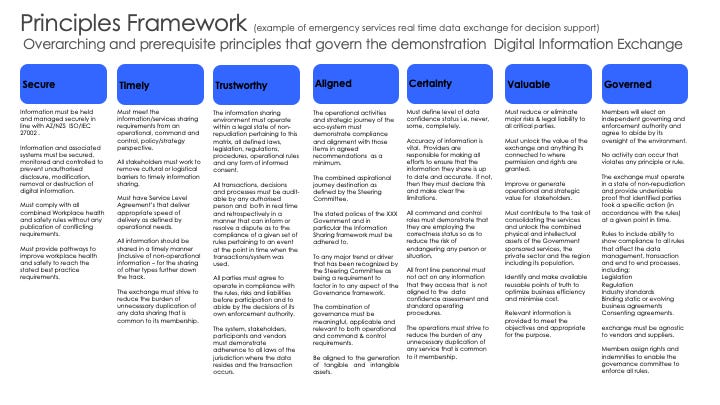Navigating AI Governance: Beyond the Chaos
Welcome to this weeks deep dive into how our i-Future Proof methodologies can transform your approach to emerging challenges. Today, we're tackling perhaps the most pressing issue facing organizations
What's On Offer
Free Subscribers: You're receiving this detailed breakdown of AI Governance methodologies. Each month, we'll explore different themes leveraging our proven i-Future Proof approach.
Premium Subscribers ($20/month): Access up to 8 hours of live group coaching and mentoring sessions where we can explore any aspect of your personal journey or project in depth.
Workshop Facilitation ($2K): Need help running workshops to create your position papers? Let's schedule a Zoom chat to explore if it's worth it for your organization.
Embedded Support: I can join your team to accelerate progress on a month-by-month basis. For ventures requiring more than $10M working capital, I consistently uncover 3-10× more verifiable value than big consulting groups at a fraction of the cost. (And please, don’t ask me to wear a tie unless absolutely necessary! 😉)
Theme: AI Governance - Why It Matters Now
In Short
AI will disrupt system order to the point of chaos, inhibiting flow and reducing value to all stakeholders, unless we prepare in advance. Starting with a qualified contextual position paper mitigates risk and provides assurance that you're ahead of the curve.
Impact Areas
Public Sector: Without proper governance, organizations face a double-whammy of compliance headaches and the adverse impacts of ad hoc implementation. Without a comprehensive digital AI framework, you risk conflicts with existing regulations and introducing complexity that creates system friction.
Real-World Example: Consider public health systems deploying AI for decision-making in patient care workflows. The operational economic value and efficiency must balance with policy-driven public value criteria to serve the intended purpose of equitable, quality healthcare delivery. Without proper governance, you risk both patient outcomes and regulatory compliance.
Enterprise: Organizations face both the burden of compliance and potential inability to capture value from AI adoption if governance isn't thoughtfully implemented.
Real-World Example: In telecommunications, operations center around legally binding contracts ranging from simple retail agreements to complex corporate arrangements. AI can now negotiate, construct, manage, update, and monitor compliance with KPIs—yielding impressive productivity gains and improving the effectiveness of agreements. But without governance, these systems risk making costly compliance errors or creating unintended consequences.
The Path Forward: 5 Critical Steps
1. Contextual Assessment (Week 1-2)
Evaluate how fast-evolving AI capabilities will impact your systems and compare with the current regulatory landscape. This gap analysis reveals your current position relative to where you need to be in your strategic timeframe.
2. Rule Identification (Week 2-3)
Document both "must not" compliance boundaries and "must do" operational rules that maintain system flow and worth. These should encompass economic, social, and public value criteria supporting the strategic intent of your systems.
3. Stakeholder Workshop I: Position Paper (Week 4)
Evolve identified rule requirements into an in-principle governance framework (matrix) that defines both compliance requirements and aspirational values. This addresses how AI could disrupt systems and how regulations might create friction in functional use.
4. Stakeholder Workshop II: Principles Matrix (Week 5)
Create overarching intent principles with matching rule sets to inform what your governance framework must deliver to maintain system order in an increasingly intelligent, AI-centric environment.
5. Tipping Point Analysis (Week 6-7)
Identify the AI-centric disruptive tipping points heading your way that will create a "new normal." Assess risk-benefit ratios and opportunities to apply first principles to eliminate system elements that don't yield intended value outcomes.
Move Forward, Sure-Footed
Concept Development: Imagine leveraging both human and AI attributes to address root problems causing system friction and pain points. Our approach helps validate that your solution can work in principle before significant investment.
Feasibility Study: Through a focused core team effort (1-4 weeks) using our Quick Look App and structured questionnaires with built-in learning modules, you'll generate a comprehensive 20-page feasibility study. This includes visual metrics and probability calculations for adoption by critical stakeholders.
Value Validation: Before requesting full funding, validate your "Worth It" claim with a small cohort of typical system users. Prove the value impact (human experience, state change, and economic value) justifies the cost, time, and effort required to realize benefits.
Beyond Governance: Creating Lasting Value
Our comprehensive approach also delivers:
Journey roadmaps with clear interdependency mapping
Value capture methodologies creating tradable 'knowledge artifacts' with real market value that can be tokenized and managed within supply chains
Ontological frameworks providing structural clarity for both solutions and systems
Ready to Future-Proof Your AI Strategy?
Let's connect on chat or reach out for a zoom call and explore how these methodologies can be tailored to your specific challenges. After all, the best time to develop AI governance was yesterday—the second best time is today.
Reach out for a conversation with other subscribers or if you have a paid subscription get a few mates together (they just need the FREE subscribe) that are interested in an aspect that you are and book up a Ask Anything session to help you navigate these waters with confidence and clarity.
When you start to add up the numbers then the value you can unlock with intelligent AI and Governance within a system will dramatically increase your worth and how much value impact you can capture and realise in a very short time frame.
Enjoy
Stephen








